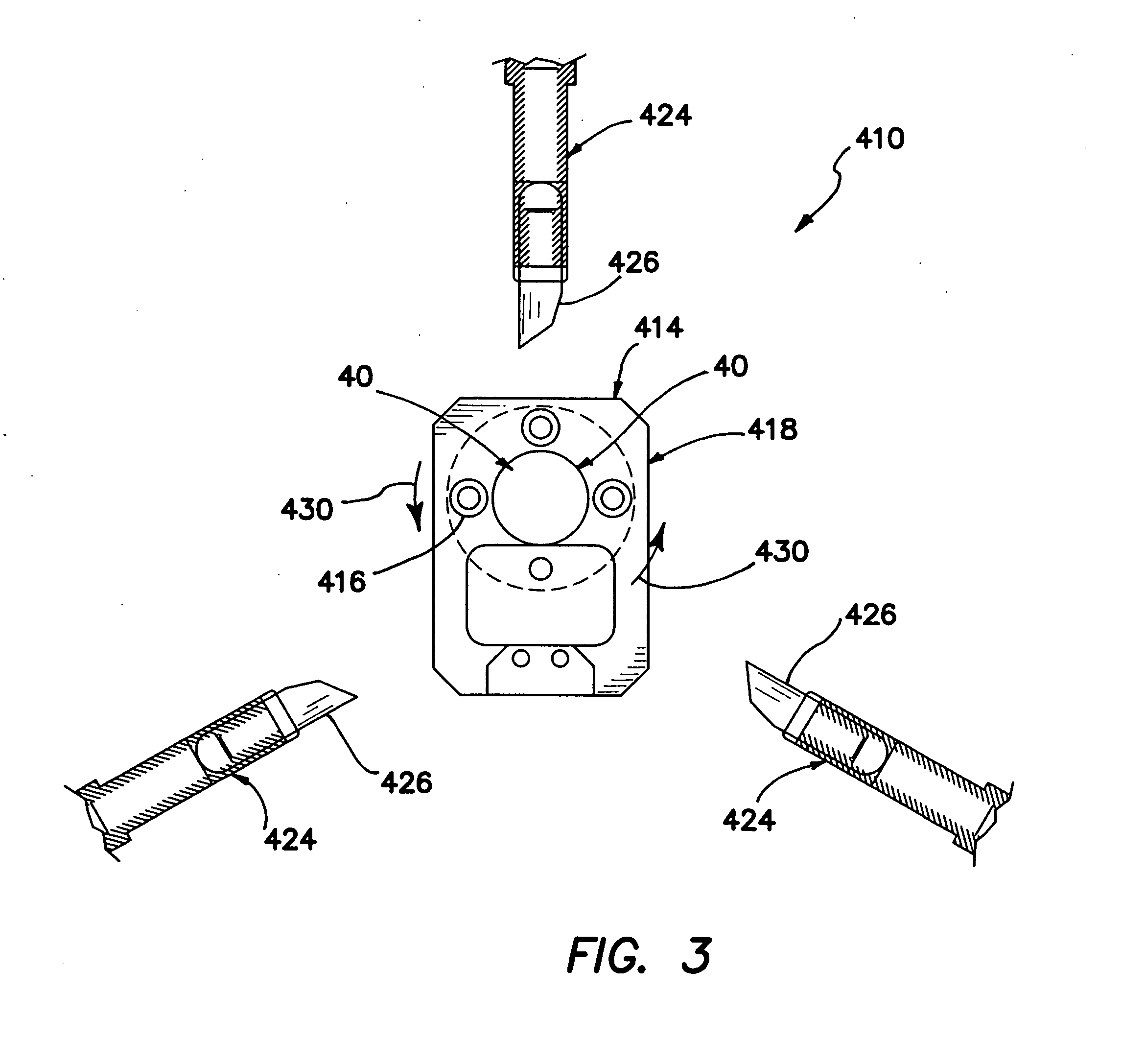Systems and methods for removing lenses from lens molds
- Summary
- Abstract
- Description
- Claims
- Application Information
AI Technical Summary
Benefits of technology
Problems solved by technology
Method used
Image
Examples
example
[0192] A tray of mold assemblies, each assembly containing a newly cured contact lens product, is received in a loading station. From the tray, pairs of mold assemblies are removed and placed in a nest located on a rotating disc. The pairs of mold assemblies are moved between various processing stations while they remain in the nest.
[0193] Each mold assembly is moved to a dipping assembly where the mold assembly is placed into a liquid bath containing deionized water at a temperature of 75° C. Ultrasound is radiated through the liquid bath to facilitate decoupling of the mold sections. The mold assembly is substantially entirely immersed in the liquid bath. Alternatively, the mold assembly is dipped in the liquid bath so that at least the mold section that includes the concave lens shaped surface (i.e. the “lens cup”) is in contact with the liquid. The mold assembly remains in the liquid for about 7 seconds. This liquid bath process functions to break or defuse bonded regions betwe...
PUM
 Login to View More
Login to View More Abstract
Description
Claims
Application Information
 Login to View More
Login to View More - R&D
- Intellectual Property
- Life Sciences
- Materials
- Tech Scout
- Unparalleled Data Quality
- Higher Quality Content
- 60% Fewer Hallucinations
Browse by: Latest US Patents, China's latest patents, Technical Efficacy Thesaurus, Application Domain, Technology Topic, Popular Technical Reports.
© 2025 PatSnap. All rights reserved.Legal|Privacy policy|Modern Slavery Act Transparency Statement|Sitemap|About US| Contact US: help@patsnap.com



